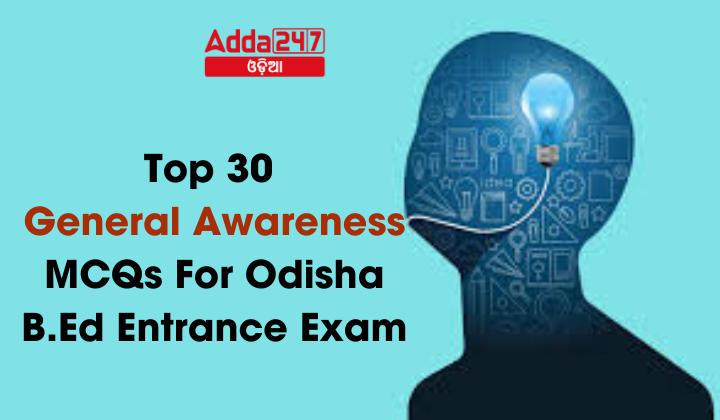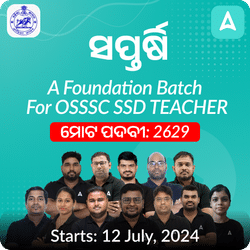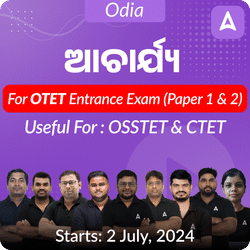Preparing for the Odisha B.Ed Entrance Exam requires a thorough understanding of education concepts and general awareness. Multiple-choice questions (MCQs) form a significant part of the exam. Here, we present the top 30 MCQs to help you ace your preparation.
Top 30 General Awareness MCQs For Odisha B.Ed Entrance Exam
- How has science influenced human attitude?
(a) Encouraged dependence on others
(b) Boosted self-confidence and promoted independent thinking
(c) Discouraged curiosity
(d) Promoted superstition
Ans: (b) Boosted self-confidence and promoted independent thinking - What has been a significant impact of scientific advancements on human health?
(a) Decreased life expectancy
(b) Increased prevalence of infectious diseases
(c) Increased life expectancy and eradicated infectious diseases
(d) No significant impact
Ans: (c) Increased life expectancy and eradicated infectious diseases - Which modern invention has significantly reduced travel distances and enhanced convenience?
(a) Internet
(b) Modern transportation
(c) Mobile phones
(d) Television
Ans: (b) Modern transportation - In what way has science revolutionized communication?
(a) By making communication slower
(b) By making the world less connected
(c) Through mass media and technology
(d) By eliminating all communication barriers
Ans: (c) Through mass media and technology - What is a major demerit of scientific advancements?
(a) Elimination of diseases
(b) Environmental deterioration and development of weapons of mass destruction
(c) Improved travel and communication
(d) Increased global unity
Ans: (b) Environmental deterioration and development of weapons of mass destruction - What is the Big Bang Theory?
(a) Theory explaining the steady state of the universe
(b) Theory explaining the origin of the universe through a cosmic explosion
(c) Theory suggesting the universe is shrinking
(d) Theory denying the existence of the universe
Ans: (b) Theory explaining the origin of the universe through a cosmic explosion - Which theory suggests a continuous expansion and creation of matter in the universe?
(a) Big Bang Theory
(b) Steady State Theory
(c) String Theory
(d) Quantum Theory
Ans: (b) Steady State Theory - What is one possible future scenario for the universe?
(a) The universe will remain the same
(b) The “big crunch” where gravity reverses the expansion
(c) The universe will completely disappear
(d) The universe will stop expanding and remain static
Ans: (b) The “big crunch” where gravity reverses the expansion - What is a hazard associated with microwave ovens?
(a) Risk of electrical shocks
(b) Cancer risk due to radiation exposure and loss of food nutrients
(c) Increased food quality
(d) No known hazards
Ans: (b) Cancer risk due to radiation exposure and loss of food nutrients - How are galaxies broadly classified?
(a) As circular and square types
(b) As elliptical and spiral types
(c) As small and large types
(d) As bright and dark types
Ans: (b) As elliptical and spiral types - Totalitarianism is characterized by:
(a) Decentralized control and openness to opposition
(b) Centralized control and repression of opposition
(c) Limited political pluralism and some tolerance of opposition
(d) Absolute political freedoms and civil liberties
Answer: (b) Centralized control and repression of opposition - Which of the following is an example of a totalitarian state?
(a) Contemporary China
(b) United States
(c) Nazi Germany under Hitler
(d) Modern Switzerland
Answer: (c) Nazi Germany under Hitler - In an authoritarian regime:
(a) Civil liberties and political freedoms are fully guaranteed
(b) There is complete transparency and competitive elections
(c) Limited political pluralism exists with some tolerance for opposition
(d) Citizens have absolute freedom of speech and assembly
Answer: (c) Limited political pluralism exists with some tolerance for opposition - Which of the following features is most likely associated with a democracy?
(a) Centralized control by a single party
(b) Suppression of dissent through censorship
(c) Protection of minority rights and civil liberties
(d) Absolute authority of the ruling party over all aspects of society
Answer: (c) Protection of minority rights and civil liberties - In a representative democracy:
(a) Citizens vote directly on laws and policies
(b) Representatives are elected to make decisions on behalf of citizens
(c) All decisions are made by a single leader
(d) There are no elections
Answer: (b) Representatives are elected to make decisions on behalf of citizens - Which statement best describes direct democracy?
(a) Citizens elect representatives to make decisions
(b) Works best in large, diverse populations
(c) Citizens vote on laws and policies directly
(d) It is commonly used at the national level in modern states
Answer: (c) Citizens vote on laws and policies directly - The Prime Minister of India:
(a) Is the ceremonial head of state
(b) Enforces laws made by Parliament and exercises executive authority
(c) Represents the nation internationally and performs ceremonial duties
(d) Is selected by Parliament as the ceremonial leader
Answer: (b) Enforces laws made by Parliament and exercises executive authority - The President of India:
(a) Is the chief executive of the government
(b) Exercises executive authority directly, without any subordinates
(c) Represents the nation domestically and internationally and ensures constitutional duties are fulfilled
(d) Is elected directly by the citizens
Answer: (c) Represents the nation domestically and internationally and ensures constitutional duties are fulfilled - Which feature is most associated with the structure of the Indian Parliament?
(a) The Lok Sabha serves as the Upper House
(b) The President is part of the Parliament but does not sit in it
(c) Members of the Lok Sabha serve a tenure of six years
(d) Rajya Sabha is elected by the citizens
Answer: (b) The President is part of the Parliament but does not sit in it - The Election Commission of India is primarily responsible for:
(a) Governing states directly
(b) Ensuring transparency and fairness in the electoral process
(c) Creating laws
(d) Managing the judiciary
Answer: (b) Ensuring transparency and fairness in the electoral process - The Nizam Sagar Dam is located in which state?
(a) Andhra Pradesh
(b) Telangana
(c) Gujarat
(d) Himachal Pradesh
Ans. (b) Telangana - Which river is associated with the Somasila Dam?
(a) Krishna River
(b) Pennar River
(c) Manjira River
(d) Sabarmati River
Ans. (b) Pennar River - The Srisailam Dam is built on which river?
(a) Tapti River
(b) Krishna River
(c) Beas River
(d) Sutlej River
Ans. (b) Krishna River - In which state is the Singur Dam located?
(a) Himachal Pradesh
(b) Andhra Pradesh
(c) Telangana
(d) Gujarat
Ans. (c) Telangana - The Ukai Dam is situated in which state?
(a) Gujarat
(b) Jammu and Kashmir
(c) Himachal Pradesh
(d) Punjab
Ans. (a) Gujarat - The Dharoi Dam is built on which river?
(a) Tapti River
(b) Pennar River
(c) Sabarmati River
(d) Krishna River
Ans. (c) Sabarmati River - The Pandoh Dam is located in which state?
(a) Himachal Pradesh
(b) Gujarat
(c) Andhra Pradesh
(d) Telangana
Ans. (a) Himachal Pradesh - Which river is the Bhakra Nangal Dam built on?
(a) Beas River
(b) Sutlej River
(c) Chenab River
(d) Indus River
Ans. (b) Sutlej River - The Chamera Dam is located on which river?
(a) Ravi River
(b) Jhelum River
(c) Chenab River
(d) Beas River
Ans. (a) Ravi River - Which river is associated with the Uri Hydroelectric Dam?
(a) Sutlej River
(b) Chenab River
(c) Jhelum River
(d) Indus River
Ans. (c) Jhelum River





